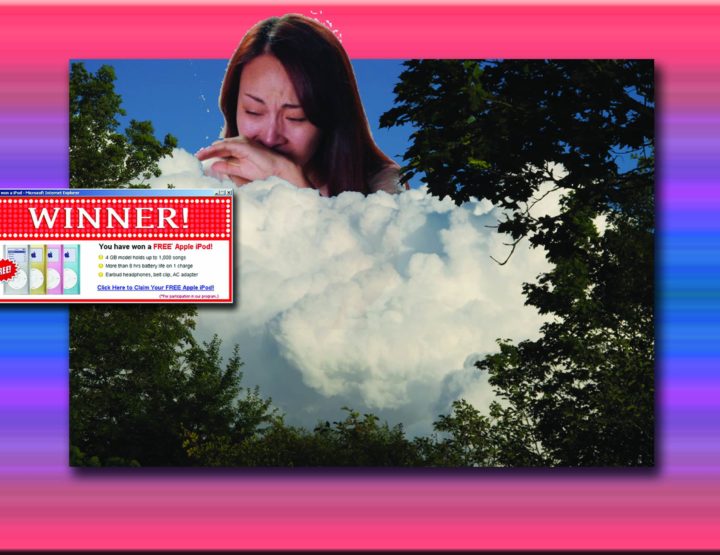Contemporary graphic design moves in mysterious ways. The paradoxical holy trinity of graphic design consists of design, art and business. How they fit together is a mystery, but somehow they form the entity known as graphic design. Some designers lean towards business and some towards art, but one of the biggest existential questions for a conscious designer is how to fit these two notions together. What is the right balance between making money and expressing oneself?
Such existential matters formed the starting point of a design project initiated at the Estonian Academy of Arts (EKA) Department of Graphic Design by two students Maria Muuk and myself. The whole project was process oriented, a journey of two designers trying to find meaning in graphic design, but the general aim of the project was simple enough: to establish a platform where such ‘philosophical’ design problems could be discussed.
The first step in this process was starting a graphic design reading group at the Estonian Academy of Arts. The group functioned as a platform for digesting various ideas and clarifying the general aims of the whole project. The focus of the project became clear through the realization that the perfect platform for discussion was the most mundane situation. Interestingly, the hot debates took place not in speciality magazines, but in school among fellow students, in a studio among colleagues, or in a bar with friends. Hence the aim of the project was to initiate those daily discussions.
Six of these discussions were recorded and published in the form of a newspaper, a temporary format emphasizing the perishable nature of a conversation. The size of the newspaper was deliberately large (A1), and the paper was text-heavy and thus a bit uncomfortable to read and handle. The idea was to make the reader browse through the discussions and jump in at random moments. Just like in a real discussion! Later on the newspaper was exhibited as part of a reading corner, together with a selection of books, articles and magazines discussed in the newspaper. The number of copies of the newspaper are limited, but one can obtain it from the Department of Graphic Design at the Estonian Academy of Arts, or directly from the authors. The following is a brief overview of the six recorded discussions.
The first two of these discussions took place among fellow students. One of the main concerns of these debates was trying to figure out the value of graphic design education in Estonia. The ideology of the Graphic Design department leans strongly towards art, seeing graphic design as an independent practice which borrows methods from contemporary art. While this approach provides a necessary alternative to the general notion of business-oriented graphic design, students educated in this manner often feel when trying to start their own practices that the two worlds are somewhat incompatible. While these debates did not provide any final solutions to the clash of business and art in graphic design, they did refine the view of the problem(s) and thus opened the way for future discussions.
One of the conversations, the third discussion in the newspaper, was conducted with two influential figures in Estonian graphic design education: Kristjan Mändmaa and Ivar Sakk. In 2001–2008, Ivar Sakk published a graphic design section in the Estonian art magazine Kunst.ee. It is still the only publication close to a graphic design speciality magazine in Estonia. In 2002 Kristjan Mändmaa published an article in it entitled “Shit, or something interesting in Estonian graphic design”. This article caused a revolution in the Graphic Design Department and is responsible for the educational approach now prevailing there.
The main question of interest was the poor state of discussions in speciality magazines. Why is this so at the moment, when only 10 years ago magazines were important contributors to design discussions? Why are magazines and the design scene in general modest in declaring their opinions nowadays? Why do we lack a radical voice? Again, no simple answers were provided, but two hours of hot debate was valuable and lacking in most design magazines today.
The following discussions summed up all the previous questions and asked them on an international scale. For that reason two discussions were organized. We conversed with Elisabeth Klement and Laura Pappa, two Estonian graphic designers who have studied in various design schools in the Netherlands (Gerrit Rietveld Academie, Sandberg Institute and Werkplaats Typografie) and who live and work in Amsterdam, and with GRMMXI, a Finnish design collective, who are design students with various national and educational backgrounds.
The outcomes of these debates were somewhat surprising. They showed that most of our educational and professional concerns seemed to be of a local nature. For instance, Klement and Pappa stated that in the Netherlands the division between art, culture oriented design and commercial design is not that evident. And for GRMMXI, the doubts concerning educational matters were of a completely different nature. For them, their education was too technical, superficial and a bit out-dated and thus the approach of our department seemed like a good alternative. While we, on the other hand, were concerned with the problematic aspects of this particular approach.
This led to the sixth discussion, which was with Indrek Sirkel, the head of the Graphic Design Department at the Estonian Academy of Arts. Among other topics, we briefly touched upon the problem of taking a stance as designers in the current neoliberal world: for example, how being ecologically conscious and supportive of “green” values has become a necessary, but relatively empty brand element for global companies. Should graphic design address these issues directly or veil them in cool and slick covers?
Taking all this into consideration, one has to keep in mind that publishing a newspaper was not the aim of the project, but a means for generating discussions. Further initiatives of the project include starting a new graphic design reading group at the Arts Academy and exhibiting the project in Helsinki, at the Myymälä Gallery, in October. Thus the goal of the project is not a particular event or a publication, but keeping the process of initiating discussions alive.











